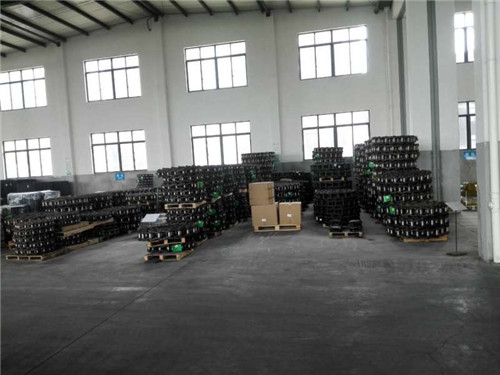What Are The Daily Maintenance Methods Of Excavator Track
As we all know, the walking part of excavator is mainly composed of driving wheel, carrier sprocket, roller, guide wheel and track. It is necessary to operate and walk every time. Therefore, after running for a certain period of time, these parts will wear to varying degrees. I would like to share with you a few daily maintenance methods, which can reduce the wear of excavator track and avoid future failure. It will take a lot of time and energy to repair.
1、 If the roller cannot be operated due to the fault is found, it shall be repaired immediately.
If there are some carrier sprockets or roller that can not continue to operate, and continue to use in such a state, it may cause roller wear and even lead to the wear of the chain link. Therefore, in case that such rollers cannot operate, it is necessary to repair them immediately, so as to avoid other faults in time.
2、 Try to avoid the excavator walking on the inclined ground or turning suddenly.
If you walk on the inclined ground repeatedly for a long time and turn suddenly, the side of the chain link will contact with the side of the driving wheel and guide wheel, so as to increase the amount of wear. Therefore, it is necessary to avoid walking and sudden turning in the inclined area as much as possible. Straight walking and big turning can effectively prevent abrasion.
3、 Regular inspection and fastening of bolts and nuts can effectively reduce track wear.
Because of the long-time work of the equipment, it is easy to loosen due to vibration. If you continue to operate the equipment when the track shoe bolts are loose, there may be a gap between the bolts and the track shoes, resulting in cracks in the track shoes. And the gap may also increase the bolt hole between the track and the link, resulting in no way to fasten, and eventually lead to the consequence that the track and the link must be replaced.
For example, if you continue to run the machine when the bolts of the track shoes are loose, it will cause a gap between the track shoes and the bolts, which will lead to cracks in the track shoes.
Therefore, the bolts and nuts should be checked and tightened regularly to reduce unnecessary maintenance costs.
4、 Try to choose a flat road
The construction road and site of earthwork are uneven. If the driver does not choose a better walking route when moving the excavator, when the track is pressed on the protruding part of the road, the track will bear the weight of the machine at some point, which is easy to cause damage to the track.
When the machine can't climb on the road with a slope of more than 30 °, the method of inserting the bucket into the soil and relying on the expansion force of the stick arm oil cylinder as the power is adopted to climb the slope, which is also easy to cause the track strain.
Therefore, when the excavator is walking, it should choose the flat road or soil surface as much as possible, and should not move the machine frequently in a long distance. When moving the excavator, it is better to use a trailer to carry it. It should not be too steep when climbing. When it is necessary to climb a steep slope, the route can be extended to slow down the slope, so as to prevent the track from stretching and injury.
5、 Clean the mud and gravel in the track timely
When soil or gravel rolls into the track, it will be squeezed between the guide wheel, driving wheel and track as the track rotates, which will make the track stretch. When the extrusion force in the track exceeds the bearing force of the track, the track will break, and the wear of the track and the four wheels will be accelerated at the same time.
Therefore, when there are mud and gravel in the excavator track, the angle between the excavator boom and the stick arm should be changed to keep it within 90 ° ~ 110 °, then the bottom of the bucket should be put on the ground, one side of the track should be suspended and rotated for several times, so that the mud or gravel in the track can be completely separated from the track, and then the boom should be operated to make the track fall back to the ground. Similarly, the other side of the track should be cleaned up Manage the soil or gravel in the track.

 Mobile:
Mobile: E-mail:
E-mail: